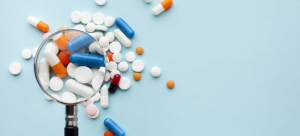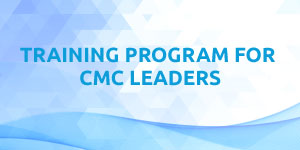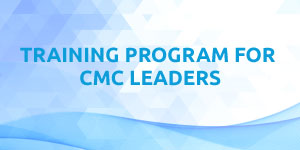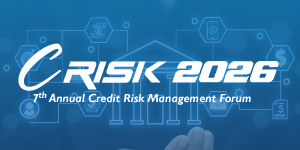Free knowledge to monitor the world of events. Have a look at our must read Blogs on Pharma, Finance, HR, Health and Cross Industry.
Benefits, Challenges, and Future Potential of Pharmacovigilance
2022-07-11
The evaluation of spontaneous reports are obtained when it is carried out within the strict and well-defined good pharmacovigilance procedure framework,
What is pharmacovigilance?
A subfield of pharmaceutical science called pharmacovigilance includes all research and data collection efforts aimed at identifying, evaluating, comprehending, and preventing hazardous drug and medical device events.
Principle of Pharmacovigilance
It entails the recognition and assessment of safety signals. A safety signal is a concern about more bad events than would be anticipated to be connected with the use of a product.
Why do businesses require PSMF?
To improve and streamline the oversight of the security of pharmaceutical products and to harmonize PV actions, the law requires MAHs to keep and make the PSMF available upon request. Any PSMF's material should make it abundantly obvious that the safety data for medications approved in the area are accessible worldwide.
Pharmacovigilance science also pertains to a wide range of other topics.
- faulty pharmaceuticals
- medication mistakes
- reports of ineffectiveness
- use of medications for purposes not authorized by FDA and for which there is insufficient scientific evidence
- accounts of poisoning cases, both acute and chronic
- Drug-related mortality assessment
- medication abuse and misuse
- adverse drug interactions with substances, other drugs, and food

Pharmacovigilance's particular objectives are to:
- Improve patient care and safety with regard to medication use and all other medical and paramedical procedures
- Boost public safety and health with regard to the usage of medications
- Encourage the safe, logical, and more effective (including cost-efficient) use of medications by contributing to the assessment of their benefits, harms, effectiveness, and risks.
- Encourage public awareness of pharmacovigilance, as well as its comprehension, education, and clinical training.
Benefits and drawbacks of Pharmacovigilance technologies
- Methods that are systematic, automated, and workable for filtering enormous datasets
- The World Health Organization (WHO), the FDA, and other organizations' extensive safety databases should be used more effectively.
- Focusing pharmacovigilance efforts on important reporting relationships to increase efficiency
- Positive effects on public health through quicker and/or more accurate identification of potential safety hazards than current pharmacovigilance techniques
- Improved decision-making capabilities for the pharmaceutical sector and regulators
- Possibility of elucidating the numerous intricate interdependent factors (such as concurrent diseases and/or medications) that may contribute to the emergence of adverse events in a clinical setting Value by identifying disparities involving multiple drugs or multiple events that would be too challenging to identify using conventional techniques.
Pharmacovigilance challenges
- Without the aid of a research procedure, randomization, and a placebo-taking control group, there are acknowledged inherent problems with methodically analyzing and interpreting voluntarily reported data involving various drugs, medical conditions, and events per report.
- Other challenges include persistent underreporting, sporadic over reporting and misreporting episodes motivated by publicity and legal action, missing and incomplete data, and changes over time in reporting and naming/coding procedures.

Future developments in pharmacovigilance technology
- The difficulties in effectively managing medication safety and complying with regulatory requirements give the strong impression that pharmacovigilance will always be adopted widely. In a politically and economically divided healthcare system that is battling with what seem to be insurmountable challenges of cost and quality as well as post marketing clinical research, pharmacovigilance offers qualities that ensure its appeal to various parties as a tool for reform.
- Pharmacovigilance systems are increasingly being adopted by biopharmaceutical companies as a result of regulatory organizations like the FDA and the European Medicines Agency (EMEA) tightening up safety standards.
- Another contentious issue is whether or not the pharmacovigilance's apparent automation of technical edit checks still needs some level of standardization in order to allow for coordinated efforts, comparable results, and interoperability. These checks' definition, range, threshold determination, and data-mining statistical methodology are all connected to alert or signal triggering. If this is the case, achieving this goal calls for the participation and collaboration of many stakeholders, among whom clinical safety science and statistical modeling subject matter specialists will continue to play crucial roles in guaranteeing deliverability and objectivity.
- How exactly will the modern pharmacovigilance revolution attract the majority of small to mid-sized businesses, pharmacies, healthcare professionals, and academic communities that continue to use labor-intensive traditional pharmacovigilance tools and prefer not to change due to various reasons, concerns, or pharmacovigilance skeptics? In order to convince these organizations that they can successfully operate within the new practice regimes that the new pharmacovigilance may offer and support with a better improved return on investment as compared to traditional pharmacovigilance, no clear strategy has yet been developed to assist these entities with the costs of installing, configuring, integrating, and maintaining pharmacovigilance systems.
- The ability of pharmacovigilance to significantly increase its ability to accurately and consistently identify clinical safety signals among the millions of voluntary data reports is perhaps the biggest area of uncertainty. It makes sense that traditional pharmacovigilance methods are still required when confirming a potential signal from an auto fired warning, identifying a potential safety risk, or deciding what course of action to take in response to a signal.
Conclusion
The best results from the evaluation of spontaneous reports are obtained when it is carried out within the strict and well-defined good pharmacovigilance procedure (GPVP) framework, which serves as a functional framework for corporate risk management strategy, public health, and healthcare delivery. These procedures are made to quickly and accurately identify new information about drug adverse reactions and to alert drug safety professionals about it. The most effective way to use data mining of adverse event databases is to fully understand the constraints and circumstances of voluntary reporting, coding, database characteristics, or quality.
Do you want to understand more about Pharmacovigilance? Join us at the Pharmacovigilance Audit and Inspection EU MasterClass on 18th to 20th October, 2022.
By Rajeethan Thaventhiran, SEO & IT Executive, GLC Europe, Colombo Office, Sri Lanka.
Get a feel for our events

Training Program for CMC Leaders - EU edition
27th October 2025 - 16th January 2026
Rich with practical insights and real-world applications
learn more >>
Training Program for CMC Leaders - US edition
27th October 2025 - 16th January 2026
Rich with practical insights and real-world applications
learn more >>
Mastering the Common Technical Document (CTD) for Biologics Masterclass - EU edition
12-16 January, 2026
From guidelines to submissions
learn more >>














